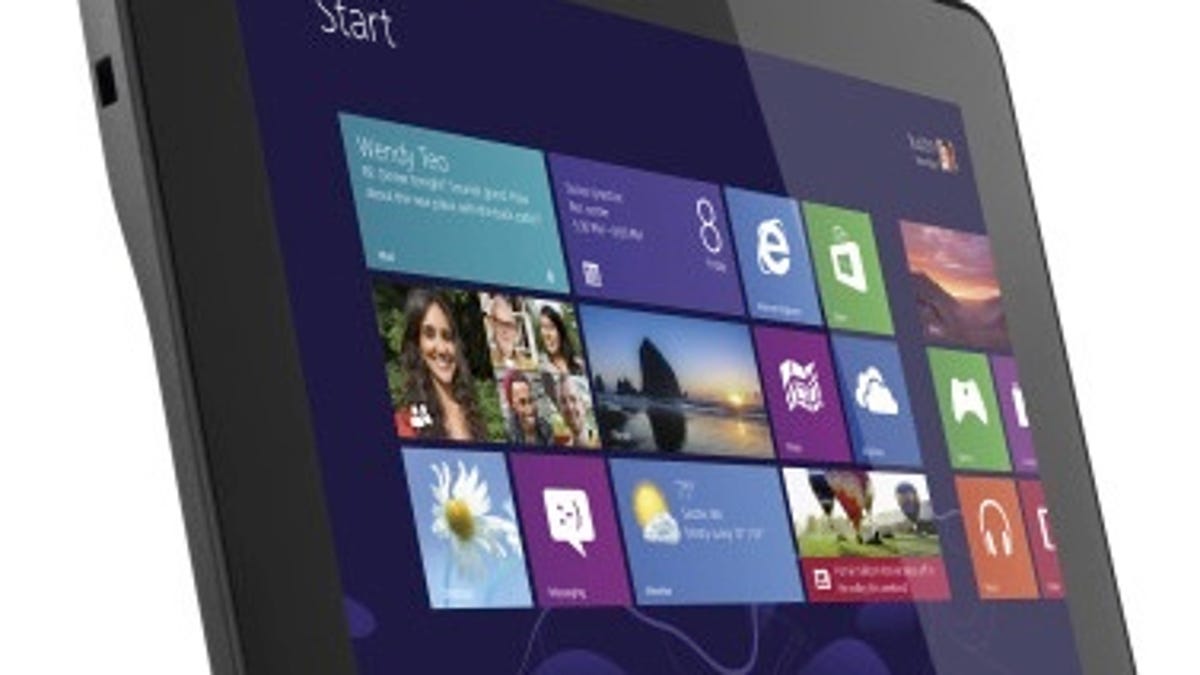Intel chip gives new hope for Windows 8 tablets
Analysts are encouraged by Intel's new Atom design. So future Windows Blue-based tablets powered by Intel's revamped mobile chips could provide a lift for Microsoft and its hardware partners.

Analysts are upbeat about Intel's new mobile chip design due later this year. That could mean a much-needed boost for Windows 8 tablets -- where many of those chips will land.
Imagine this: an ultraslim, light tablet with roughly twice the performance of any Atom-based Windows 8 tablet on the market now. (And that's the full version of Windows, not Windows RT.)
That could happen in the second half of this year.
So think of Windows Blue (or Windows 8.1) products similar to Samsung's 0.38-inch thick ATIV Smart PC 500T Tablet or Dell's 0.4-inch thick Latitude 10 with new Intel quad-core "Bay Trail" processors based on the overhauled Atom micro-architecture.
And smaller tablets, like Acer's rumored 8-inch tablet, should ultimately benefit too.
That can only be seen as good news for Windows 8 tablets, which haven't exactly been taking the market by storm.
Here's a sampling of analysts' comments on the new Atom Silvermont micro-architecture -- announced Monday -- that will power Bay Trail chips:
- Citi Research's Glen Yeung: Better than ARM? "We suspect that Intel's Silvermont [micro-architecture] will provide better performance metrics than even ARM's vaunted Cortex A15...Expected to appear in tablets in [the second half 2013] and smartphones in [the first half 2014], Silvermont also has the distinction of being the first mobile chips (from any vendor) to benefit from tri-gate [3D] transistors...And like ARM's Cortex A15 core, Silvermont is a fully out-of-order architecture, a feature heretofore not present in Atom solutions...We view Silvermont as the basic building block for Intel's future mobile architectures."
- RBC Capital Markets' Doug Freedman: More balanced and responsive systems. "Intel has stated improved performance per watt, with Silvermont operating at 3x peak performance or at same performance at 5x lower power vs. current Atom core...Intel highlighted a more efficient out-of-order execution pipeline that drives a more balanced and responsive system...Intel's architecture allows for fast switching between high [performance] and low [performance] states...however, we acknowledge that Intel is battling market skepticism in low-power vs. ARM."
- Anandtech's Anand Shimpi: 2x performance claims valid. "First of all, based on what I've seen and heard from third parties working on Baytrail designs -- the performance claims of being 2x the speed of Clovertrail (current Atom) are valid. Compared to the two [ARM] Cortex A15 designs I've tested (Exynos 5250, dual-core A15 @ 1.7GHz and Exynos 5410 quad-core A15 @ 1.6GHz), quad-core Silvermont also comes out way ahead. Intel's claims of a 60 percent performance advantage, at minimum, compared to the quad-core competition seems spot on based on the numbers I've seen. Power is the only area that I can't validate based on what I've seen already. (No one has given me a Baytrail tablet to measure power on.) Given what we know about Silvermont's architecture and the gains offered by Intel's 22nm process, I do expect this core to do better on power than what we've seen thus far from ARM's Cortex A15."

